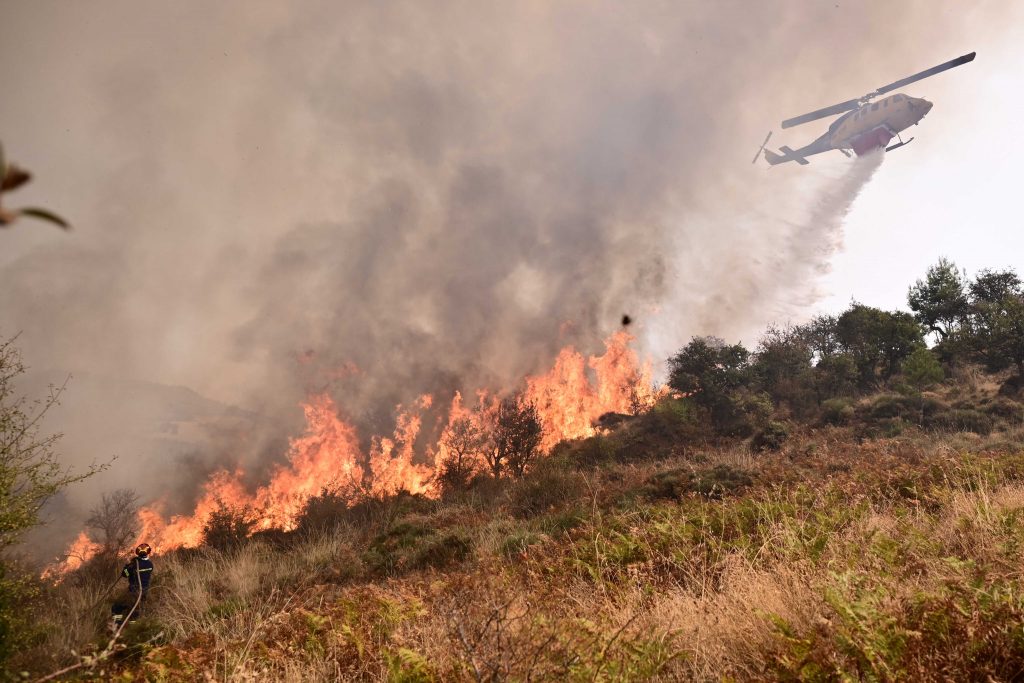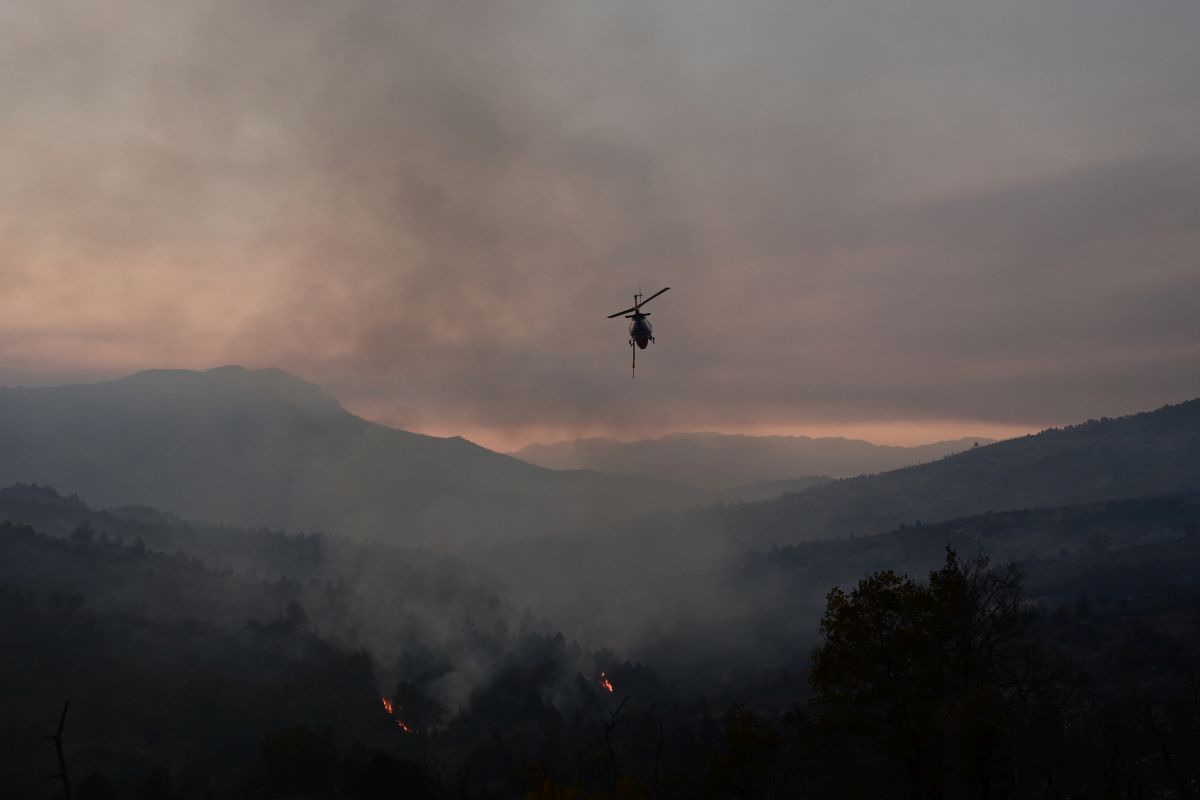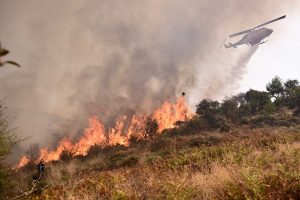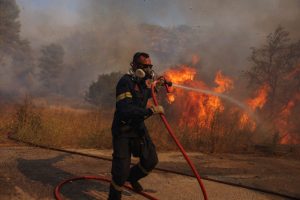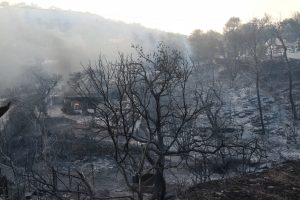There is no longer an active front in the Corinth Fire authorities announced on Wednesday morning, the fourth day since the devastating wildfire broke out in the coastal town of Xylokastro, and surrounding settlements of the Corinth prefecture, in the Peloponnese.
570 firefighters remain at the scene with 28 forest firefighting units and 160 vehicles, along with volunteers, water tanks, and machinery, battling scattered hotspots throughout the region.
The gale-force winds have now subsided, and the small fires that remain are in areas hard to access by ground units. 10 Aircrafts resumed water-drops at day break.
The Corinth fire managed to take enormous proportions, reaching a united front of 32 kilometers, its smoke painting skies crimson across Greece. Director of National Meteorological Center (EMY) Theodoros Kolydas posted a photo on social media showing how the smoke had reached as far as Crete, 360km away.
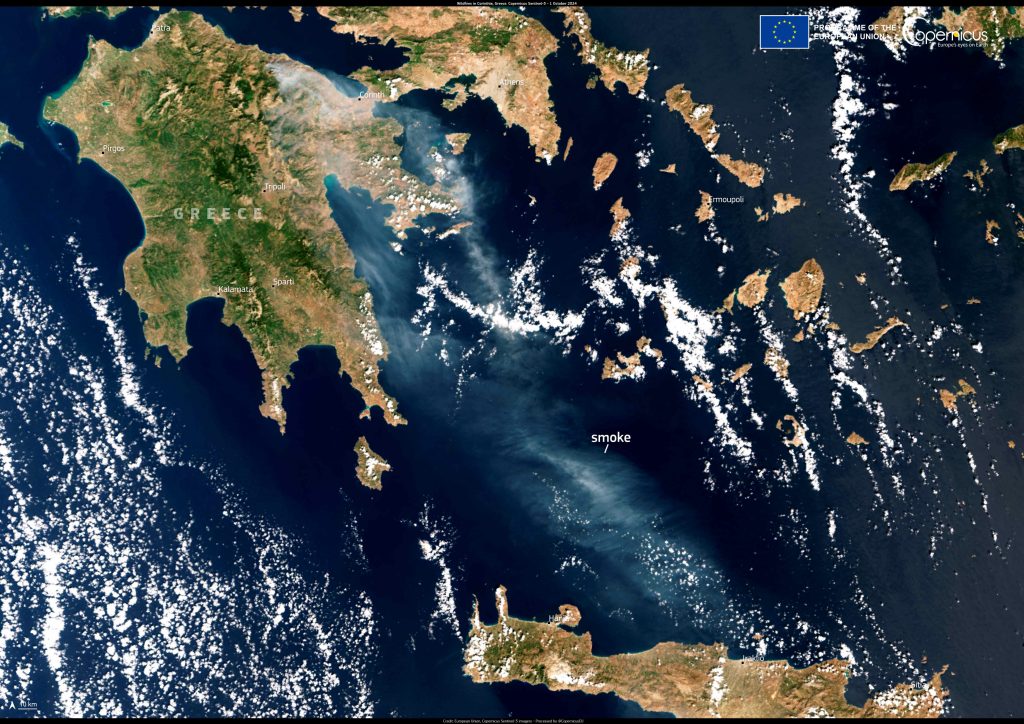
European Union, Copernicus Sentinel-3 imagery, Image of the Day.
Initial estimates place the extent of the damage at over 12,000 acres burnt, while, according to the mayor of Xylokatro, the fire has completely destroyed crops and houses have also been burned.
In a press conference on Tuesday, Climate Crisis and Civil Protection Minister Vassilis Kikilias highlighted the region’s rugged terrain, as well as the climate conditions, made firefighting efforts very challenging.
“When the fire begins with northwest winds, it creates significant problems for teams trying to stop it as it moves east. They managed to contain it on the first night. Then the weather changed, and the fire adapted to the terrain. If it’s on a slope, it ascends or descends, depending on where there’s vegetation to burn. When the wind stops, the flames and smoke rise vertically, making it difficult for aerial units to directly fight the fire front” he explained.
He also stated that damage to homes so far is minimal, but a full damage assessment will be carried out once the fire is extinguished. He added that providing aid to fire stricken communities falls under the responsibility of the Deputy Minister of Civil Protection.
“We believe we have managed to protect a significant portion of our citizens’ properties so far. […] However, the scale of destruction is now something that is part of the era we’re living in, and the conditions we’re facing,” he noted.
